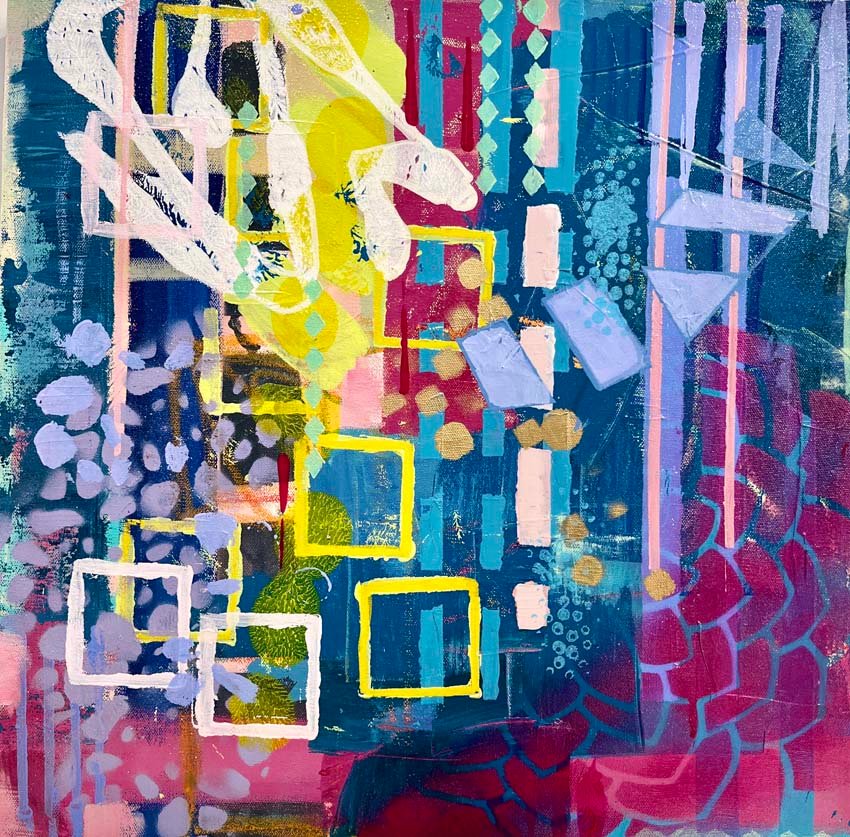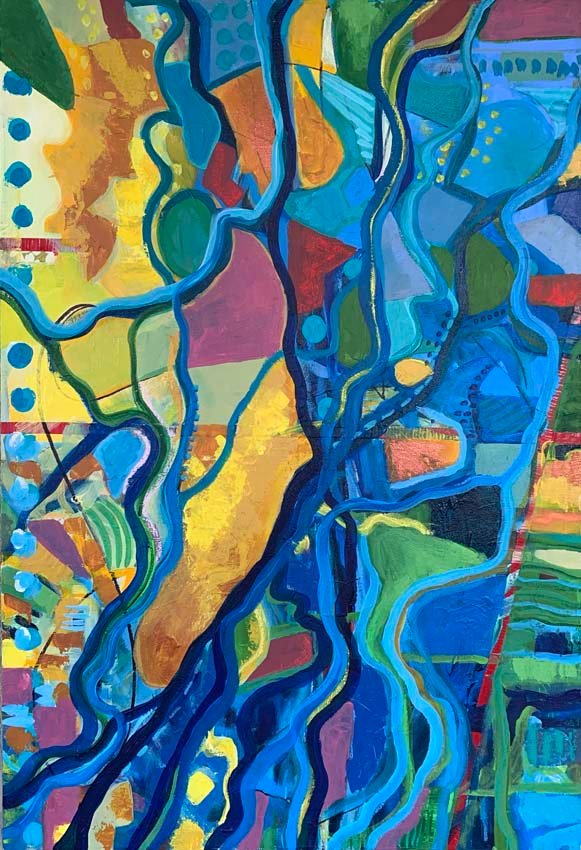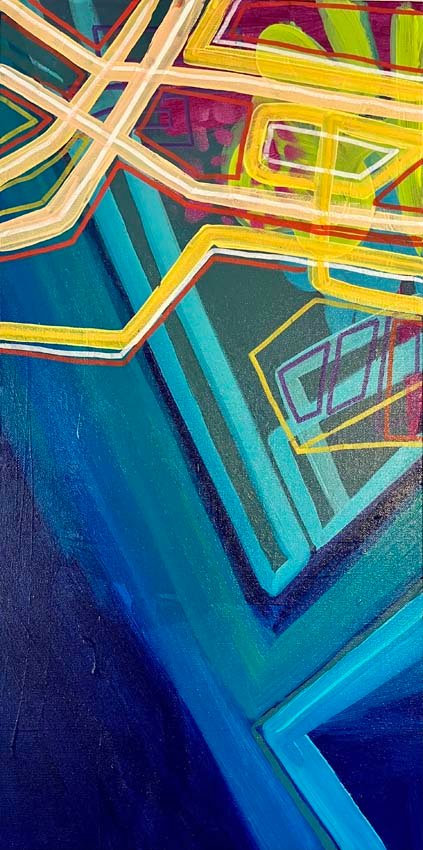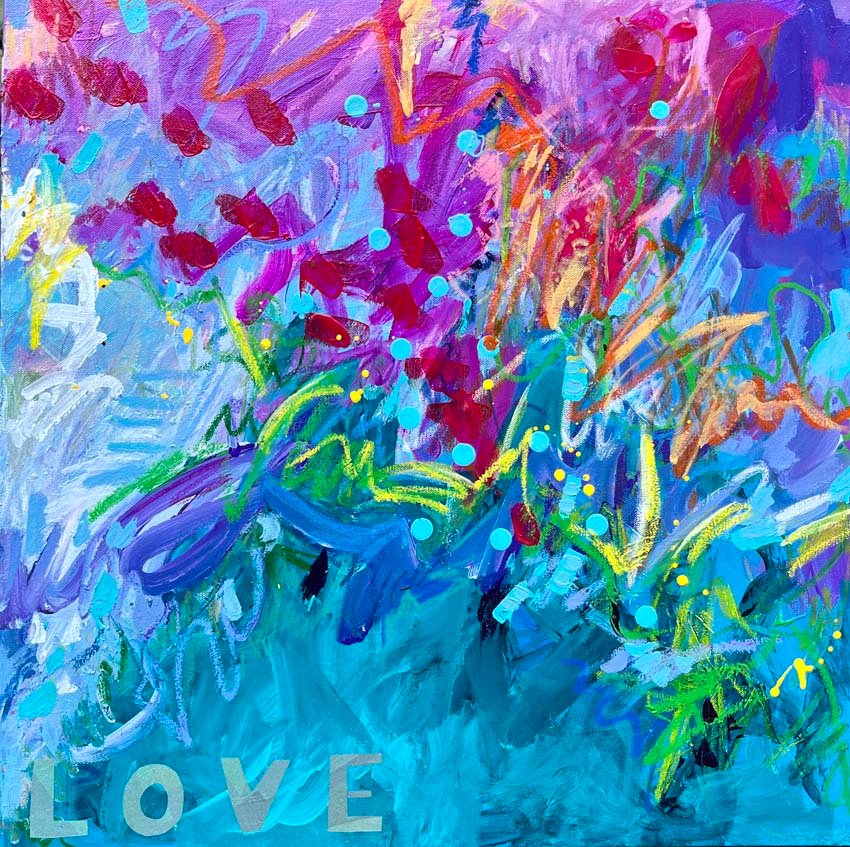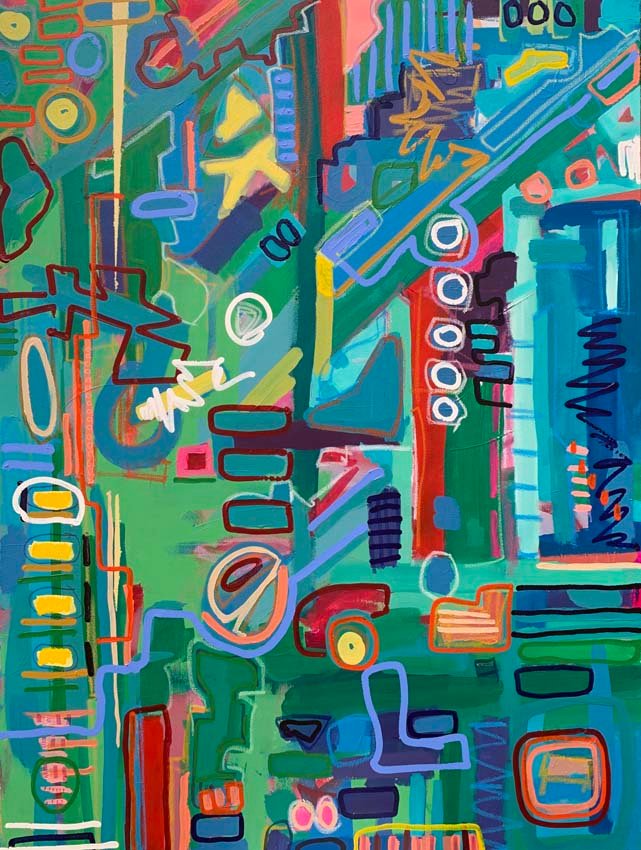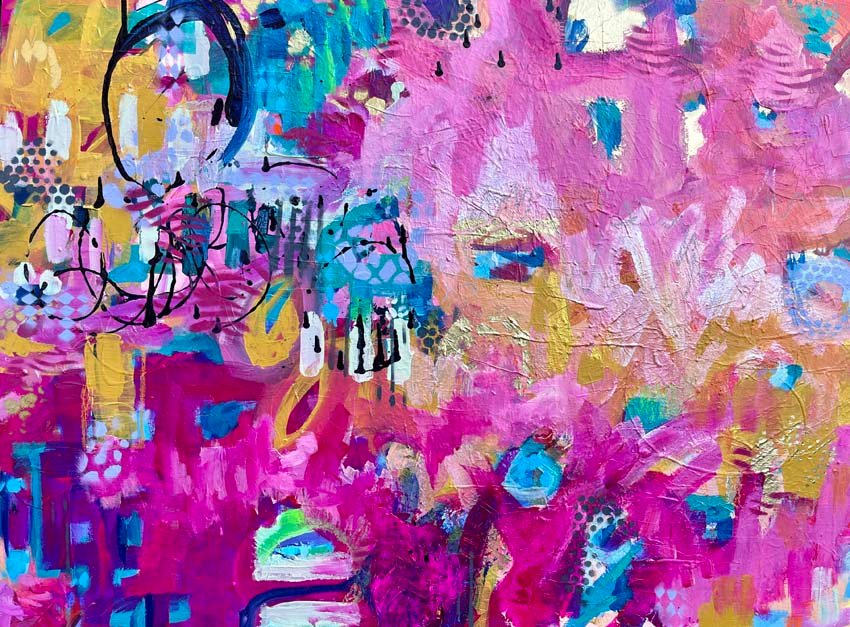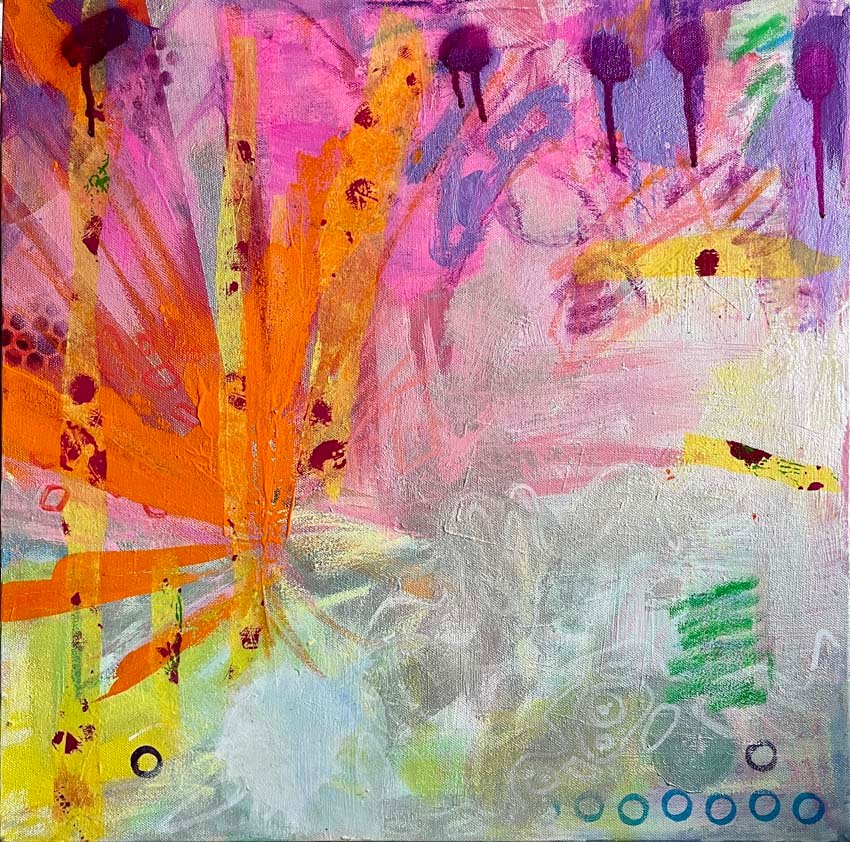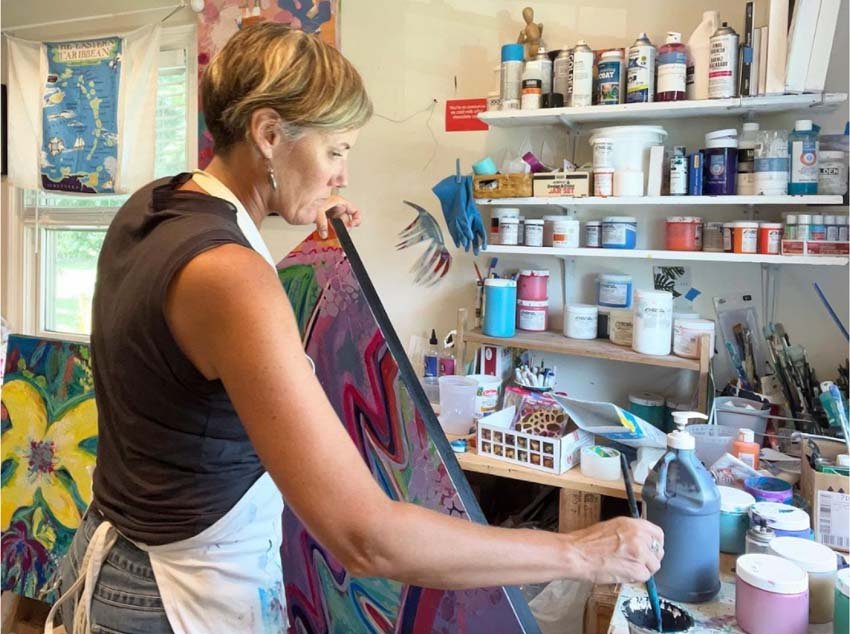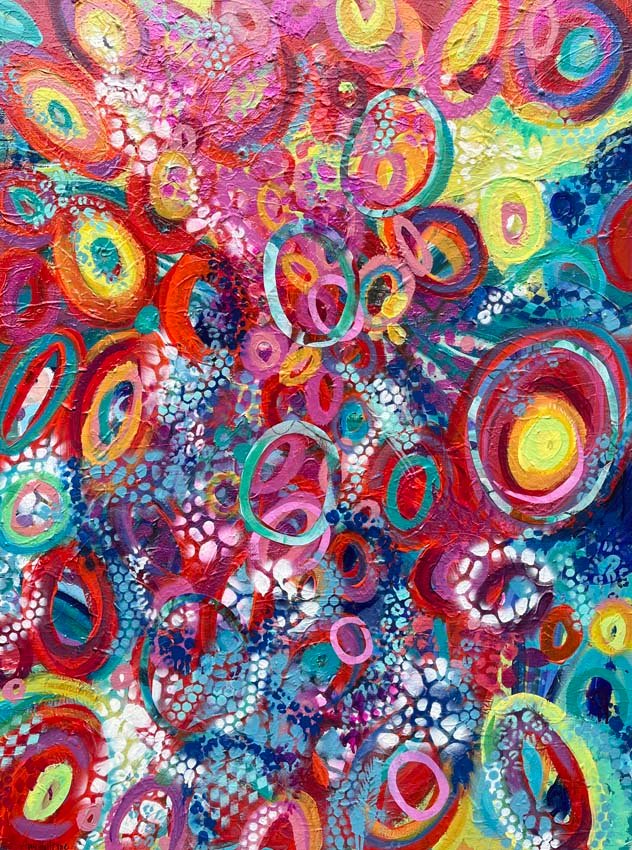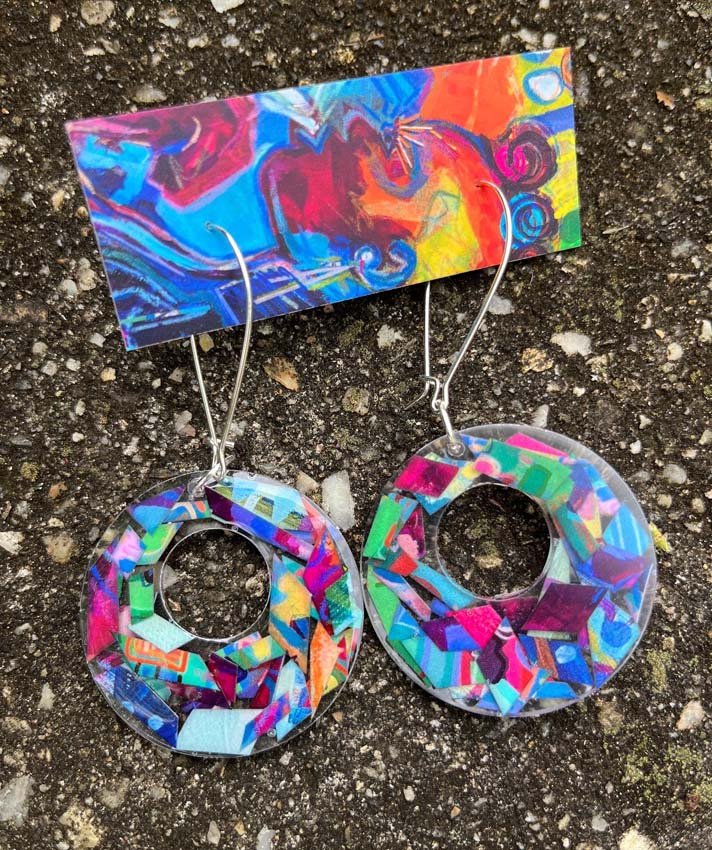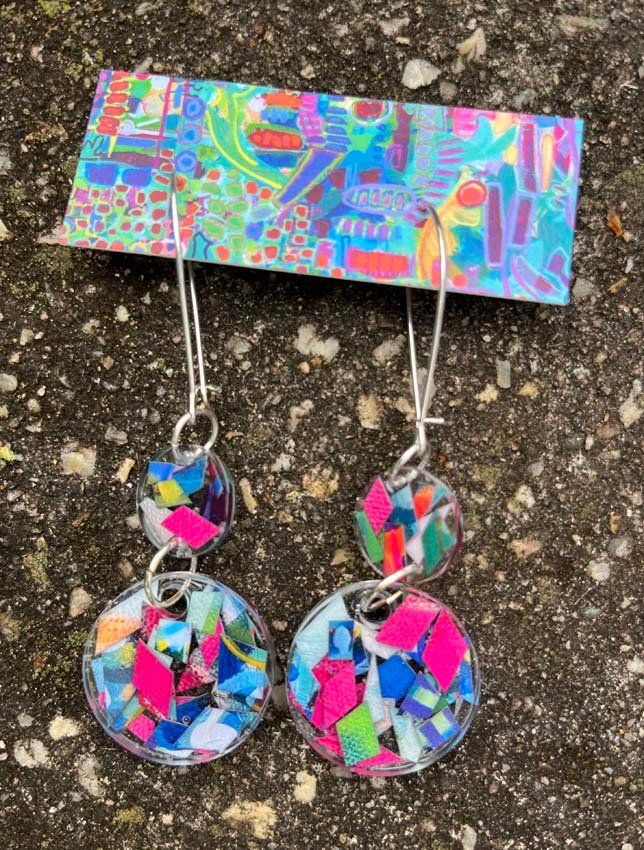+ By Desiree Smith-Daughety + Photos courtesy of Amy Holt Cline
Artist Amy Holt Cline thrives in the nexus between art and science. She has a bachelor’s degree in biology education and a Master of Education in science education with an emphasis on the ocean, which has influenced her creative process and features strongly in her work. “I grew up in Southern California next to the Pacific Ocean and consider it my best friend forever!” says Cline. Having since relocated to the Annapolis area, she has now spent as much time on the Atlantic Coast as she did on the Pacific Coast.
A full-time educator currently working with grades three through six, Cline teaches MakerTech, which includes hands-on activities and tools for coding and engineering as part of STEAM education—an approach that incorporates science, technology, engineering, arts, and mathematics. This merging of interdisciplinary concepts especially appeals to her and is a recurring theme in her art.
Cline has taught at several marine institutes, including at Ocean Institute in California, Newfound Harbor Marine Institute in the Florida Keys, and the Ocean Process Analysis Laboratory (OPAL) of the University of New Hampshire (UNH). During her tenure at OPAL, she partnered with fishers and scientists as a communications liaison to determine how the two groups interact with data in real life, including collection and application. Cline has also connected scientists with educators to discuss how science data are collected and what data patterns teachers could share with their students.
This intersection of subjects is also the strategy that she uses in the classroom, where she began merging art and science 15 to 20 years ago. “I used art to teach high school science in a way that engaged students and impacted their commitment to the subject,” she says.
While Cline has long been engaged in science education, she has been equally captivated by art. She almost got a degree in fibers because she likes textures, which feature in her paintings; she often layers them with fabric, tape, and paper. Previously, she owned a handmade fiber-based tote bag business. Texture also shows up in the jewelry that she creates out of her printed paintings. Her goal is to make her work more affordable to those not able to buy her larger pieces.
While she likes making big pieces, her home studio constrains what she can produce and ship. At work in her studio, she sets a canvas-in-progress on the floor, propped against the wall that she uses as a makeshift easel. Her studio is filled with jewelry, cards, and stacks of paper for mixed media. “It would be easier if I were just a painter rather than a mixed-media artist,” she says. “There’d be a lot less stuff to hold on to.”
She’s fascinated with satellite imagery and microscopic organisms such as phytoplankton. She and her husband are avid sailors, and Cline is a surfer, usually slipping away to surf in Costa Rica once a year. In her art, her love of the tropics and oceans figures prominently, and science is always prevalent in the pieces she creates, whether as inspiration or topic or by taking a geographic way of looking at things. She taught marine-focused geographic information systems (GIS), specifically how to look at seafloor data and compare it satellite-gathered surface data, at Essex North Shore Agricultural and Technical School in Massachusetts in the environmental science program that she helped found.
“It led to how I think about art and painting now,” she says. “When I worked at UNH, I worked with scientists that collected data that was on the bottom of the ocean—through sonar—and the surface of the ocean where data was collected by satellites.” This inspired her to create “Seafloor Mini Collection,” which included Sonar Pass 57, featuring color contrast influenced by data she recalled from her UNH work.
Cline’s creative process involves layers added to the canvas. The acrylic paint and any added media elements must dry in between applications. She might do a collage-type piece, adding unique bumps and texture to the canvas. At any given point, three in-progress works may be in rotation, which may take a day, week, or up to two months. Cline often adds a layer before 7 a.m., then heads out to teach. The issue of layers having to dry prompted her gravitation toward acrylic paints, avoiding the longer drying process of oils.
In 2008, Cline’s husband’s job led to a move to Philadelphia. While there, she undertook an apprenticeship with James Dupree, an acrylic, mixed-media, and abstract painter, to learn his methods. She describes Dupree’s work as highly chromatic, vibrant, and layered, with a stained-glass effect. She also took classes at the Pennsylvania Academy of the Fine Arts and was accepted into Philadelphia’s University of the Arts, earning another master’s degree, this time in art education. “I wanted to learn all the rules and then break them and make them fun and weird and crazy,” she says. “Why are we separating science and art? All the research during Leonardo da Vinci’s day, when a lot of things merged and brilliance happened—it was normal for a person to be a draftsman and painter, for example, but now, it’s separated. My evolution is that I want to merge better.”
Some of her early artistic influences include the Impressionists, but she’s also drawn to big and bold colors, as evidenced in her own work. She appreciates the work coming from the ICB ART collective in Northern California, and is always looking for new, bold artists to inspire her. She mentions Andrew Faulkner, Linda Christensen, Kathy Jones, Sandy Ostrau, and Kate Zimmer and highlights London-based artist Andrew Salgado. “[He] is super-figurative and pushing the envelope. I’m fascinated with his clarity and boldness of color,” she says.
Cline takes commissions from clients, has shown work in galleries such as the Maryland Federation of Art’s Circle Gallery and has work dispersed among such locations as Alma Restaurant in New York City and Airbnb properties. Cline has also had art shows, including two in 2022. One, at Bean Rush Cafe, featured her large paintings as well as jewelry, cards, and posters.
The other, at 49 West Coffeehouse, Winebar & Gallery, was themed around visualizing seafloor data.
“My latest thing has been doing a deep dive into Instagram’s art network, which is super strong and a very useful resource,” she says, and she actively markets herself on social media. As for future plans, she has canceled traveling plans over school spring break to focus on painting. “I need a concentrated amount of time to produce!” There in her studio space, surrounded by the myriad supplies that support her art-making endeavors, Cline will use the lens of her imagination to seek connections, whether it’s between the vastness of satellite imagery with microscopic organic materials or influenced by some other nexus of subjects. “Science is always prevalent,” she says.
